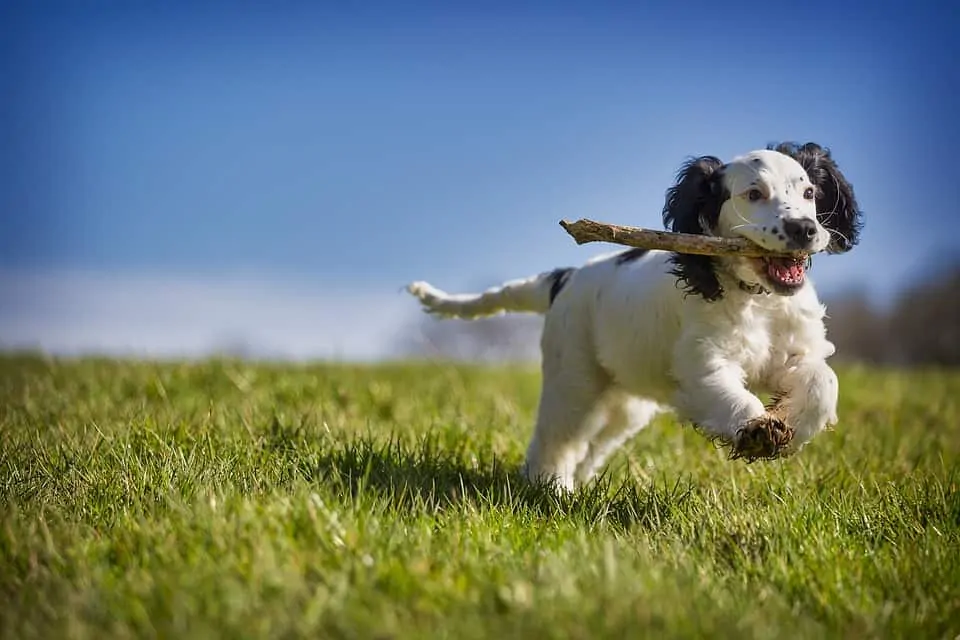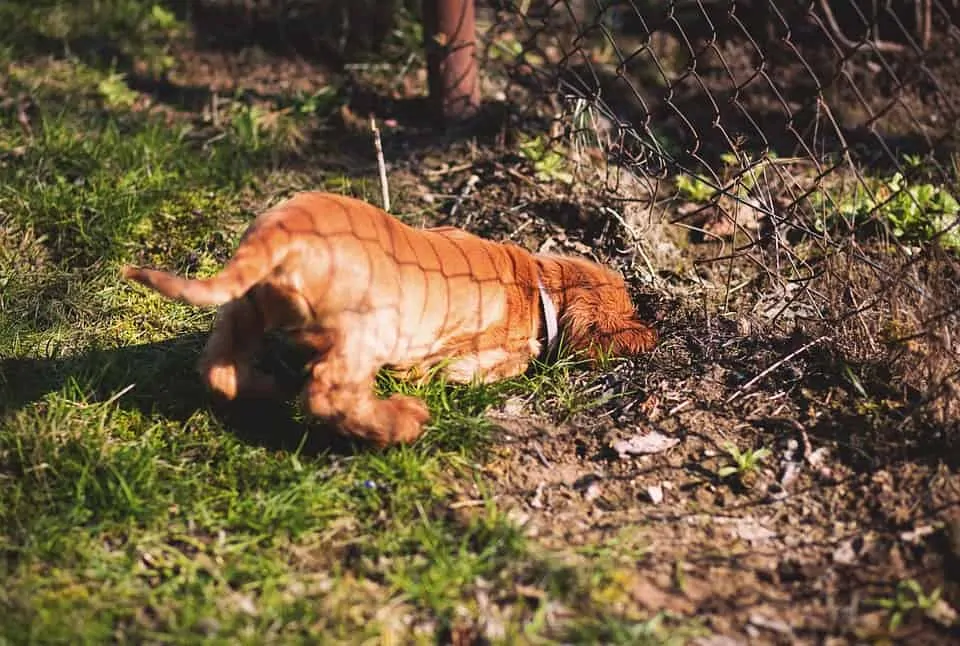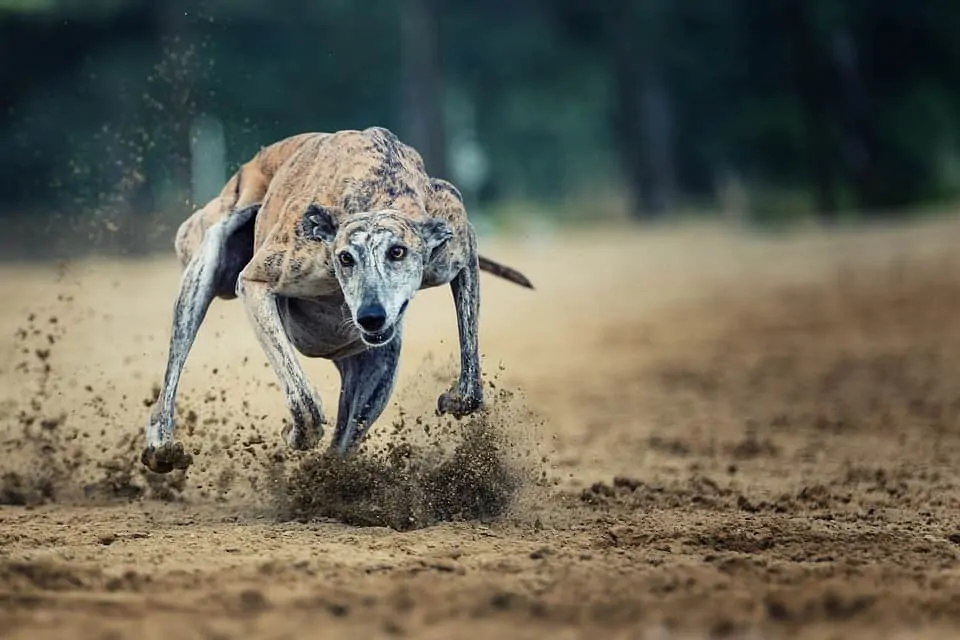Making sure your dog gets enough exercise is important both for their mental and physical health. But how do you know what the “right” amount of exercise is?
While there is no one right answer to the question “how much exercise does a dog need every day?” there are some steps you can take to figure out what amount of activity is right for your individual pup’s needs.
In this article, we will look at the different factors that play into a dog’s exercise requirements as well as how to calculate exactly how much time your pup needs to spend running around based on those factors. We’ll also take a look at some of the best ways you can exercise your pup to get the most out of the time you spend with them.
Factors that Play Into Exercise Need
There are certain factors that play into how much activity any one dog needs. While all dogs are a little different, spending time considering each of these factors can help you get closer to understanding how much exercise it will take to keep your dog fit and content enough to be well-behaved.

Age
Everyone knows that puppies are more active than older dogs, but the topic of age and exercise is far more complicated than this dichotomy.
Young puppies, newborns to about 16 weeks of age, sleep much of the day and don’t have the stamina for long bouts of activity. As a dog enters their fifth month of age, however, this begins to change. Suddenly, they are pulling you on walks instead of the other way around.
This increase in activity needs tends to continue until it reaches its peak around adolescents. Depending on your breed, this may be anytime between 9 months and 20 months of age.
This is the time period most owners begin seeing troublesome behaviors in their pups–things like excessive barking, chewing, lapses in housetraining, and even aggressive behavior. Oftentimes, these behaviors indicate your pup isn’t getting as much exercise as they need.
Once a dog reaches adulthood–around 2 years for larger breeds and sooner for small dogs–their exercise needs tend to level out and stay stable for a number of years.
As they reach their golden years, most dogs tend to slow down. But even at this point, exercise is important for helping your senior dog stay trim and stimulated.
Breed
It should come as no surprise that a dog’s activity needs vary based on their breed.
Working breeds, such as cattle dogs, border collies, and pointers, tend to require a lot of exercise and a ton of mental stimulation to be happy. Companion and toy dogs, on the other hand, need less activity in their lives.
Similarly, the size of your dog can play into how much exercise they require.
Large dogs like Great Danes and Newfoundlands may have been bred to work, but their huge size means they tire out quickly and tend to age faster. Teacup dogs, even those breeds bred for the sole purpose of sitting on your lap, tend to have a lot more energy than their giant cousins. Luckily, those short legs mean it takes less to wear them out than a larger dog.
Greyhounds are often seen as some of the best athletes in the canine world, so you might expect them to need a lot of activity at home. But the truth is this breed is one of the lazier ones you are likely to find. Huskies, on the other hand, are well known for their athleticism and their constant need for mental and physical activity.
According to the AKC, some of the most active dog breeds are:
- Shetland Sheepdog
- Dalmatian
- Siberian Husky
- Border Collie
- Labrador Retriever
Some of the least active dog breeds include:
- Maltese
- English Bulldog
- Basset Hound
- Chow Chow
- Saint Bernard
If you haven’t acquired a pup yet, it is worth taking the time to consider each breed’s activity needs and how that might fit into your lifestyle before you choose your next dog.
Of course, if you have a mixed breed, it can be more difficult to determine your dog’s activity needs based on looks alone. Some dogs may be more or less active than the breeds that went into making them and with some dogs, you simply can’t know what their genetics are. In this case, it is best to take notes from the dog themselves on how much exercise they need.
Daily Routine
How your dog spends their day outside of exercising can also play a huge part in determining how much exercise they will need.
A dog that is crated or kenneled for eight hours a day while their owners are at work will have a lot more pent up energy that they need to burn off.
On the other hand, a dog that has free access to the backyard or is getting constant stimulation from a stay-at-home parent throughout the day, won’t have quite as much energy to burn.
While the ability to move around during the day is an important factor, mental stimulation also plays a huge role in tiring out your dog.
If your dog is frequently provided with chew treats, stuffed Kongs, puzzle toys, and other activities, even if they are crated, they will be more tired at the end of the day then a dog without these items.

Individual Needs
Of course, all dogs differ in how much activity they need–even dogs of the same breed and age. Sometimes these variations are due to simple personality differences, and sometimes it has to do with the dog’s overall health.
Obviously, dogs who are not feeling well will not need (and should not get) as much exercise as a healthy dog. If your dog has an injury or is recovering from surgery, their activity should be limited, even if they look like they can go-go-go just like they used to.
Overweight dogs aren’t as active as trim pups, though, they can benefit from an increase in exercise to help them get back to a healthy weight.
In the end, you will need to take your dog’s age, breed, lifestyle, and individual quirks into account before you can truly understand how much exercise they need every day.
How to Calculate How Much Exercise a Dogs Needs
Once you have given some thought to how different factors play into your dog’s needs, you can work to calculate how much time you should be spending exercising them each day using the three steps below.

1. Start with the Typical Exercise Needs for an Adult Dog or Puppy
In general, dogs need about 30 minutes to 2 hours of exercise each day.
If you have an adult dog, it is a good idea to start with a baseline amount of 1 hour per day. For older puppies and adolescents, start with a baseline of 2 hours per day.
2. Add Exercise Time Based on Breed and Routine
If you happen to own a working dog such as a shepherd, terrier, or retriever, add an extra 30 minutes to your baseline amount. If you know your dog is active even for their breed, it may be worth adding on another 30 minutes.
If your dog is crated or left alone for a large portion of the day, add an additional hour of exercise to your running total. Not only is this necessary to compensate for the lack of stimulation your dog receives while calone, but it will also help get them extra tired so they can stay calm and content while you are away.
3. Adjust Based on Behavior and Feedback
Now that you have a good estimate for how much exercise your dog needs, put it to the test. For the next few days, commit to giving your dog this much activity each day (if you need ideas on what to do, check out the next section).
In most cases, it is best to break up the total activity time into shorter periods. For instance, if your dog requires three hours of exercise a day, try breaking it down into three one-hour chunks spread throughout the day. If your dog is crated most of the day, do a large chunk of exercise before you leave for work so they are tired enough to sleep while you are gone.
Younger puppies may do best with multiple short exercise sessions every few hours.
Once you have your new exercise routine in place, keep an eye on your dog’s behavior, and adjust your activity time accordingly.

If your dog shows signs of excess energy, such as chewing, barking, nipping or other attention-seeking behaviors, try adding another 30 minutes of exercise to your routine or upping the intensity.
On the other hand, if your dog seems extra-tired at the end of the day or has trouble settling at night, you may be overdoing it. Try reducing the amount of time spent exercising or the intensity of your exercises.

In the end, the best way to meet your dog’s daily exercise requirements is to engage them in as many different types of activities as possible. While this may take a little extra effort on your part, it will pay off in the end, with a healthier, better-behaved pooch.

Jen Jones is a professional dog trainer and behavior specialist with more than 25 years of experience. As the founder of ‘Your Dog Advisor’ and the ‘Canine Connection’ rehabilitation center, she applies a holistic, empathetic approach, aiming to address root causes rather than merely treating symptoms.
Well known for her intuitive and compassionate approach, Jen adopts scientifically-proven, reward-based methods, encouraging positive reinforcement over punishment. Jen specializes in obedience training, behavior modification, and puppy socialization. Her innovative methods, particularly in addressing anxiety and aggression issues, have been widely recognized. Jen has worked with many of the world’s leading dog behaviorists and in her free time volunteers with local animal shelters and rescue groups.


 Dogs are social creatures who absolutely love to play. Allowing your dog time to wrestle around with other canines will not only help tire them out but will help them to be better socialized around different types of dogs and in different situations.
Dogs are social creatures who absolutely love to play. Allowing your dog time to wrestle around with other canines will not only help tire them out but will help them to be better socialized around different types of dogs and in different situations. 